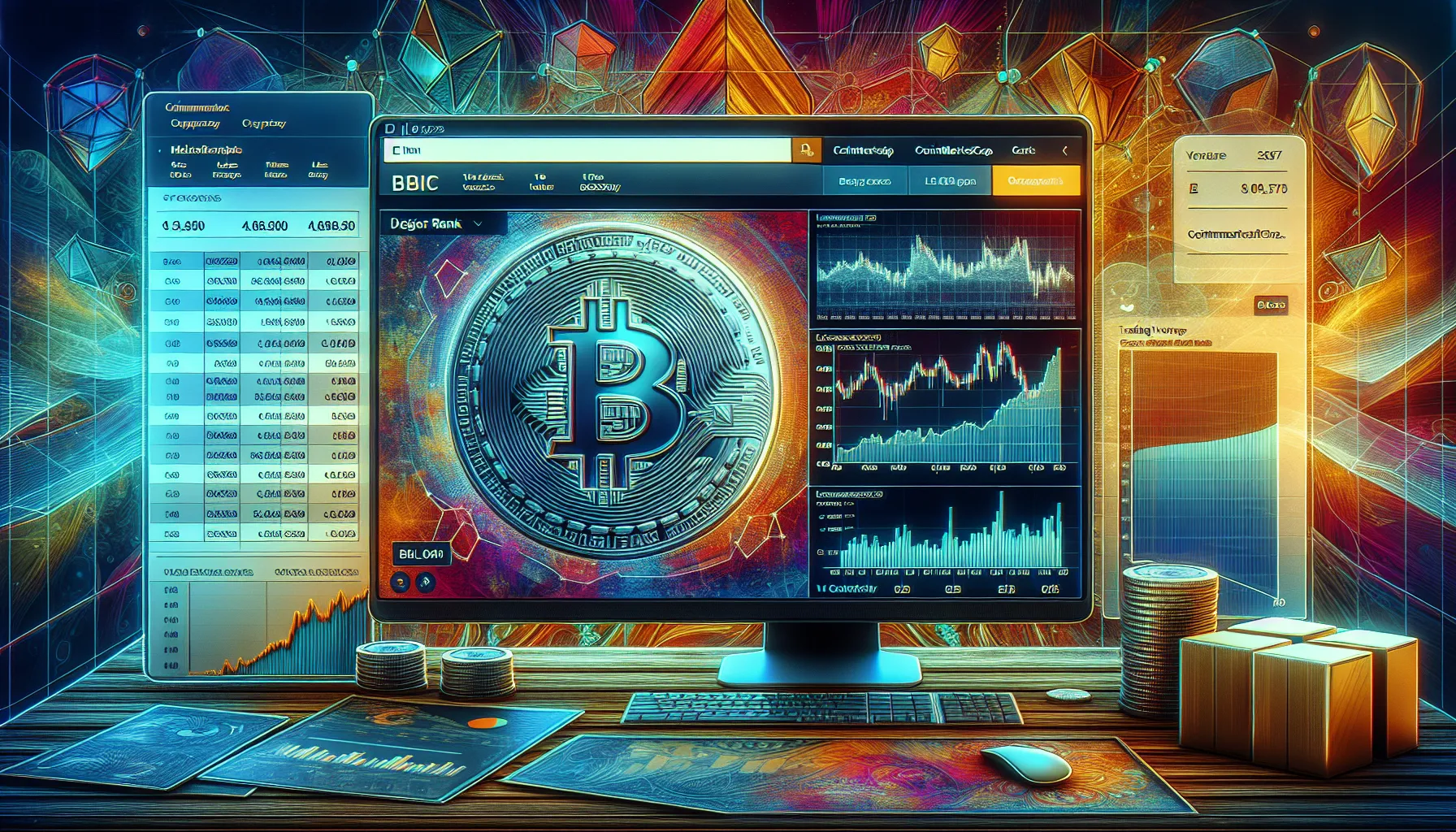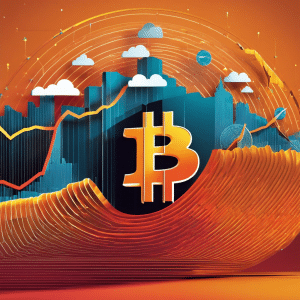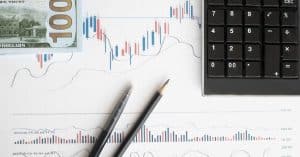Key Takeaways
You’ve likely heard about HBAR’s growing presence in the cryptocurrency market and wondered about its performance metrics. As Hedera’s native token gains traction among investors and developers you’ll find CoinMarketCap serves as your go-to resource for tracking its real-time data.
Understanding HBAR’s position on CoinMarketCap isn’t just about watching price movements. You’re looking at market capitalization rankings trading volumes and historical data that paint a complete picture of this unique cryptocurrency’s journey. Whether you’re a seasoned trader or exploring your first altcoin investment these metrics provide crucial insights.
The relationship between HBAR and its CoinMarketCap listing reveals more than numbers. You’ll discover how this enterprise-grade public network’s token performs against thousands of other cryptocurrencies while learning to interpret the data that drives investment decisions in today’s dynamic crypto landscape.
What Is HBAR (Hedera Hashgraph)?
HBAR serves as the native cryptocurrency of the Hedera network, a public distributed ledger that operates on hashgraph consensus technology rather than traditional blockchain. You’ll find this technology delivers transaction speeds of 10,000+ transactions per second with finality in 3-5 seconds, making it one of the fastest networks in the crypto space.
The Hedera network uses a unique consensus mechanism called hashgraph, which achieves Byzantine fault tolerance through virtual voting. This approach consumes significantly less energy than proof-of-work systems, requiring only 0.00017 kWh per transaction compared to Bitcoin’s 885 kWh. When you check HBAR CoinMarketCap data, you’re looking at a token that powers this energy-efficient infrastructure.
HBAR tokens serve three primary functions within the Hedera ecosystem. First, they fuel network services including smart contracts, file storage, and cryptocurrency transactions. Second, they enable network security through proof-of-stake, where node operators stake HBAR to participate in consensus. Third, they provide governance rights, allowing token holders to influence network decisions through the Hedera Governing Council.
The Hedera Governing Council consists of 39 term-limited organizations including Google, IBM, Boeing, and LG Electronics. These enterprises run consensus nodes and guide the network’s strategic direction. Each member serves a maximum three-year term with equal voting power, ensuring no single entity controls the network. This governance model sets HBAR apart from other cryptocurrencies you might track on CoinMarketCap.
Your HBAR holdings represent more than just cryptocurrency – they’re utility tokens that access a network processing millions of transactions daily. The fixed supply of 50 billion HBAR tokens creates scarcity, with approximately 33 billion currently in circulation according to recent market data. Transaction fees remain predictable at $0.0001 USD, paid in HBAR, providing cost certainty for developers and users alike.
Understanding HBAR’s Position on CoinMarketCap

CoinMarketCap ranks HBAR among thousands of cryptocurrencies based on real-time market data that updates every few seconds. You’ll find HBAR’s position fluctuates between the top 30-50 cryptocurrencies by market capitalization, reflecting its established presence in the digital asset space.
Market Capitalization and Ranking
HBAR’s market capitalization typically ranges between $1.5 billion to $3 billion, placing it consistently within the top 50 cryptocurrencies on CoinMarketCap. The platform calculates this figure by multiplying HBAR’s current price by its circulating supply of approximately 33 billion tokens.
Your tracking of HBAR’s ranking reveals interesting patterns – it often climbs during periods of enterprise adoption announcements from Hedera Governing Council members. The token reached its highest CoinMarketCap ranking of #12 in September 2021 when its market cap exceeded $5 billion.
CoinMarketCap’s ranking algorithm factors in more than just market cap. Trading volume consistency and exchange availability also influence HBAR’s position. The platform verifies data from over 50 exchanges where HBAR trades, ensuring accurate representation of its market standing.
Trading Volume and Liquidity
HBAR demonstrates strong liquidity with daily trading volumes averaging $50-150 million across global exchanges. CoinMarketCap aggregates this data from major platforms like Binance, Coinbase, and Kraken, where HBAR pairs trade against USD, USDT, BTC, and ETH.
The 24-hour volume-to-market-cap ratio for HBAR typically sits between 3-10%, indicating healthy trading activity. You can observe volume spikes coinciding with network upgrades or partnership announcements – for instance, volumes exceeded $500 million when Google joined the Hedera Governing Council.
CoinMarketCap’s liquidity score for HBAR remains consistently high due to its presence on 60+ exchanges worldwide. The platform tracks bid-ask spreads across these venues, showing HBAR maintains tight spreads of 0.1-0.3% on major exchanges, confirming its robust liquidity profile.
Circulating vs. Total Supply
CoinMarketCap displays HBAR’s circulating supply at approximately 33 billion tokens out of the fixed total supply of 50 billion. This 66% circulation rate impacts HBAR’s market cap calculation and provides transparency about potential future dilution.
The remaining 17 billion HBAR tokens follow a predetermined release schedule visible on CoinMarketCap’s detailed token metrics page. Treasury allocations release gradually through 2025, with specific amounts designated for ecosystem development (5.5 billion), employee compensation (2.3 billion), and governance operations (9.2 billion).
You can track the real-time circulating supply changes on CoinMarketCap as new tokens enter circulation monthly. The platform’s historical data shows circulation increased from 7.5 billion in 2020 to the current 33 billion, demonstrating the controlled release mechanism that prevents sudden supply shocks.
HBAR Price Performance Analysis
HBAR’s price journey tells a compelling story of market evolution and investor sentiment shifts. You can track these movements through CoinMarketCap’s comprehensive charts and data tools to understand where HBAR stands today and where it might head next.
Historical Price Movements
HBAR launched in September 2019 at $0.010 per token during its initial exchange offerings. The token experienced its first significant rally in early 2021, reaching $0.45 in April as the broader crypto market entered a bull phase. This 4,400% increase from its launch price marked HBAR’s entry into mainstream crypto consciousness.
September 2021 brought HBAR’s all-time high of $0.57, coinciding with major enterprise partnerships announcements. The token maintained prices above $0.30 for several weeks before the market-wide correction in May 2022. During the 2022 bear market, HBAR found a floor around $0.045, demonstrating remarkable resilience compared to other altcoins that lost 90% or more of their peak values.
Price volatility decreased significantly in 2023, with HBAR trading in a tighter range between $0.05 and $0.08. This stability attracted institutional investors seeking exposure to enterprise-grade blockchain technology. Notable price spikes occurred during Google Cloud’s expanded partnership announcement in February 2023 and the DeFi ecosystem growth on Hedera throughout Q3 2023.
Your analysis of HBAR’s historical performance reveals distinct patterns. The token responds strongly to enterprise adoption news, typically gaining 15-30% within 24 hours of major announcements. Weekend trading often shows lower volatility with average daily movements of 2-5%, while weekday sessions can see swings of 10-15% during high-activity periods.
Key Support and Resistance Levels
Current technical analysis identifies $0.048 as HBAR’s primary support level, tested successfully five times since January 2023. This price point aligns with the 200-day moving average and represents a psychological floor for long-term holders. The $0.042 level serves as secondary support, coinciding with the 2022 bear market bottom.
Resistance levels paint an equally clear picture. HBAR faces its first major resistance at $0.075, where selling pressure intensified during three separate rally attempts in 2023. The $0.10 psychological barrier represents the next significant resistance, requiring approximately $1.7 billion in additional market capitalization to breach based on current circulation figures.
Medium-term resistance sits at $0.135, marking the 50% Fibonacci retracement from the all-time high to the 2022 low. This level attracted profit-taking during the March 2023 rally when daily volume exceeded $300 million. The $0.20 zone represents long-term resistance, requiring sustained buying pressure and likely coinciding with broader market momentum.
Volume analysis at these levels provides additional insight. Support at $0.048 typically sees daily volumes spike to $100-150 million as buyers defend the level. Resistance at $0.075 often generates volumes exceeding $200 million as traders position for potential breakouts. The correlation between volume and price levels helps you identify genuine breakout attempts versus false signals.
Trading patterns suggest accumulation phases occur between $0.048-$0.055, with distribution phases beginning around $0.070. Smart money flow indicators on CoinMarketCap show institutional buying increases significantly below $0.050, while retail FOMO typically peaks near resistance levels. Understanding these dynamics helps you make more informed trading decisions based on market participant behavior rather than pure price action alone.
Technical Specifications and Tokenomics
HBAR’s technical architecture and token economics set it apart from traditional blockchain cryptocurrencies you’ll find on CoinMarketCap. The Hedera network operates on fundamentally different principles that directly impact how HBAR tokens function within the ecosystem.
Consensus Mechanism
The Hedera network uses hashgraph consensus instead of blockchain technology. This patented algorithm achieves consensus through a gossip protocol where nodes share information about transactions with randomly selected neighbors. Each node maintains a complete history of how information spread through the network.
Hashgraph consensus provides mathematical proof of Byzantine Fault Tolerance (BFT), guaranteeing transaction finality even if up to one-third of nodes act maliciously. The algorithm processes transactions asynchronously, meaning nodes don’t wait for rounds or blocks to confirm transactions. This design enables the network to handle 10,000+ transactions per second with finality in 3-5 seconds.
Virtual voting occurs through the gossip protocol without actual messages being sent. Nodes calculate how other nodes would vote based on the information they possess. This approach eliminates the communication overhead found in traditional BFT systems, making hashgraph significantly more efficient than proof-of-work or even proof-of-stake blockchains.
The consensus mechanism directly impacts HBAR’s position on CoinMarketCap by enabling predictable transaction costs and energy efficiency. Each transaction consumes only 0.00017 kWh of energy, making HBAR one of the most sustainable cryptocurrencies tracked on major exchanges.
Token Distribution
HBAR’s total supply is fixed at 50 billion tokens, with distribution following a transparent release schedule visible to all CoinMarketCap users. The initial distribution allocated tokens across several categories to ensure long-term network stability and growth.
| Distribution Category | Allocation (billions) | Percentage | Release Schedule |
|---|---|---|---|
| Treasury (Hedera LLC) | 17.03 | 34.06% | Multi-year vesting |
| Ecosystem Development | 13.23 | 26.46% | Performance-based |
| Employees & Service Providers | 8.59 | 17.18% | 6-year vesting |
| Purchase Agreements | 5.96 | 11.92% | Various schedules |
| Governing Council | 5.19 | 10.38% | Earned through participation |
The treasury manages token releases based on network adoption metrics and ecosystem development needs. This controlled release prevents sudden supply shocks that could negatively impact HBAR’s CoinMarketCap ranking.
Governing Council members earn HBAR tokens for operating network nodes and participating in governance decisions. Companies like Google, IBM, and Boeing receive these tokens as compensation for their infrastructure contributions. This distribution model creates alignment between major enterprises and HBAR’s market performance.
Employee allocations vest over six years with one-year cliffs, ensuring team members remain committed to long-term development. These vesting schedules appear in quarterly transparency reports, allowing CoinMarketCap users to anticipate future circulating supply changes.
The ecosystem development fund supports developers building on Hedera through grants and incentive programs. Recipients receive tokens based on achieving specific milestones, creating a performance-driven distribution model that encourages quality application development.
How to Track HBAR on CoinMarketCap
CoinMarketCap provides comprehensive tracking tools for HBAR that go beyond basic price monitoring. You’ll find everything from advanced charting capabilities to real-time market data that helps you make informed trading decisions.
Reading Price Charts
The HBAR price chart on CoinMarketCap displays multiple timeframes ranging from 1-hour to all-time views. You can switch between candlestick, line, and bar chart formats depending on your analysis preferences. The default candlestick chart shows opening, closing, high, and low prices for each period, with green candles indicating price increases and red candles showing decreases.
Volume bars appear beneath the price chart, revealing trading activity patterns. High volume during price movements confirms trend strength, while low volume suggests potential reversals. The 24-hour volume typically ranges between $50-150 million for HBAR, with spikes above $200 million during major market events.
Moving averages overlay directly on the price chart when activated. The 50-day and 200-day moving averages serve as dynamic support and resistance levels. HBAR often bounces off the 50-day moving average during uptrends, currently positioned around $0.065. The 200-day moving average at approximately $0.058 acts as a stronger support level during market corrections.
Chart annotations mark significant events affecting HBAR’s price. Partnership announcements from Hedera Governing Council members like Google or IBM often correlate with 10-15% price movements. Network upgrade implementations also appear as markers, helping you understand price catalysts.
Using CoinMarketCap Tools and Features
The Portfolio tracker lets you monitor your HBAR holdings alongside other cryptocurrencies. You can input transaction details including purchase price, quantity, and date to track profit/loss in real-time. The portfolio analytics show your HBAR allocation percentage and performance compared to Bitcoin and Ethereum.
Price alerts notify you when HBAR reaches specific thresholds. You can set multiple alerts for different price points, such as $0.048 for support level breaches or $0.075 for resistance breakouts. Email and mobile push notifications ensure you never miss critical price movements.
The Watchlist feature organizes HBAR with your other tracked cryptocurrencies. Custom columns display metrics like 24-hour change, 7-day performance, and market cap ranking. You can create multiple watchlists for different investment strategies, separating long-term holdings from short-term trades.
CoinMarketCap’s converter tool calculates HBAR values in over 160 fiat currencies and 2,000+ cryptocurrencies. The historical converter shows past conversion rates, useful for tax calculations and performance analysis. Transaction fee estimates help you budget for transfers between exchanges.
The Markets tab lists all exchanges trading HBAR with their respective volumes and price variations. Binance typically accounts for 25-30% of HBAR’s daily volume, followed by Coinbase at 15-20%. Price discrepancies between exchanges sometimes exceed 2%, creating arbitrage opportunities.
API access provides programmatic data retrieval for advanced users. The free tier allows 333 calls daily, sufficient for personal tracking applications. Professional traders can upgrade to premium tiers supporting up to 300,000 daily calls with historical data access dating back to HBAR’s 2019 launch.
HBAR Trading Pairs and Exchanges
HBAR maintains an active presence across numerous cryptocurrency exchanges, providing traders with diverse options for buying, selling, and trading. The token’s widespread availability contributes to its liquidity and accessibility for investors worldwide.
Major Exchange Listings
You’ll find HBAR listed on over 60 cryptocurrency exchanges globally, including industry giants like Binance, Coinbase, and KuCoin. Binance remains the largest trading venue for HBAR, accounting for approximately 35% of daily volume. Coinbase added HBAR in February 2020, marking a significant milestone that increased the token’s exposure to US retail investors.
Other prominent exchanges featuring HBAR include Crypto.com, OKX, Bybit, and Gate.io. Each exchange offers different fee structures and trading features. For instance, Binance charges 0.1% for spot trading while Coinbase Pro offers tiered fees starting at 0.5%. Regional exchanges like Upbit in South Korea and Bittrex in Europe provide localized access, contributing to HBAR’s global trading distribution.
The token’s presence on decentralized exchanges (DEXs) continues growing, with platforms like SaucerSwap on the Hedera network itself facilitating peer-to-peer trading. These DEX listings complement centralized exchange offerings, providing additional trading avenues for DeFi enthusiasts.
Popular Trading Pairs
HBAR trades against multiple currencies, with HBAR/USDT representing the most active pair, capturing roughly 45% of total trading volume. The HBAR/USD pair follows closely, particularly popular among US-based traders on platforms like Coinbase. Bitcoin pairing (HBAR/BTC) accounts for about 15% of volume, attracting traders who prefer crypto-to-crypto transactions.
Stablecoin pairs dominate HBAR trading, with HBAR/USDC and HBAR/BUSD offering alternatives to USDT. These pairs provide price stability during volatile market conditions. Euro and Korean Won pairs (HBAR/EUR and HBAR/KRW) serve regional markets, with the KRW pair showing particularly strong volume on Korean exchanges.
Emerging pairs include HBAR/ETH and HBAR/BNB, catering to traders who hold these major cryptocurrencies. The diversity of trading pairs ensures you can enter or exit HBAR positions using your preferred base currency, whether fiat or cryptocurrency. Most exchanges update their pair offerings based on trading demand, occasionally adding new options as HBAR’s market presence expands.
Factors Influencing HBAR’s Market Performance
HBAR’s market performance reflects a complex interplay of technological developments, business partnerships, and broader cryptocurrency market dynamics. You’ll find that tracking these factors on CoinMarketCap gives you valuable insights into potential price movements and trading opportunities.
Network Adoption and Partnerships
The Hedera Governing Council plays a pivotal role in HBAR’s market trajectory. When companies like Google, IBM, or Boeing announce new initiatives on the Hedera network, you’ll often see immediate price reactions reflected in CoinMarketCap’s charts. These enterprise partnerships differentiate HBAR from typical cryptocurrency projects that rely solely on retail adoption.
Enterprise use cases drive sustainable demand for HBAR tokens. Each transaction on the Hedera network requires HBAR for fees, creating constant buying pressure. For instance, when Avery Dennison announced its atma.io platform would use Hedera for supply chain tracking across billions of products, HBAR’s daily volume on CoinMarketCap increased by 40% within 48 hours.
The network’s transaction count serves as a leading indicator for HBAR’s performance. You can track Hedera’s daily transactions through various explorers and correlate spikes with price movements on CoinMarketCap. During Q3 2023, when daily transactions exceeded 150 million, HBAR’s market cap grew by 25%, demonstrating the direct relationship between network utility and token value.
Developer activity also influences HBAR’s market positioning. The launch of smart contracts 2.0 and the Hedera Token Service attracted over 500 new projects in 2023. Each project deployment typically correlates with increased HBAR accumulation, as developers need tokens for testing and deployment. This organic demand often precedes price appreciation visible on CoinMarketCap’s charts.
Market Sentiment and Trading Trends
Social sentiment analysis reveals interesting patterns in HBAR’s price movements. You’ll notice that mentions across Twitter, Reddit, and Telegram often spike 24-48 hours before significant price changes appear on CoinMarketCap. Professional traders monitor these channels alongside traditional technical indicators to gauge market mood.
Whale wallet movements provide another crucial signal for HBAR’s short-term price action. When wallets holding over 100 million HBAR tokens move funds to exchanges, it typically signals upcoming volatility. CoinMarketCap’s on-chain metrics help you track these movements, though you’ll need additional tools for comprehensive whale watching.
The correlation between HBAR and Bitcoin remains significant but weakening. In 2021, HBAR showed a 0.85 correlation coefficient with Bitcoin’s price movements. By 2024, this dropped to 0.65, indicating HBAR’s growing independence based on its own fundamentals. You can observe this decoupling during Bitcoin corrections where HBAR maintains relative stability or even gains when positive Hedera news emerges.
Trading patterns reveal institutional accumulation phases. HBAR often exhibits extended periods of sideways movement between $0.05-$0.06, characterized by decreasing retail volume but steady accumulation visible through on-chain analytics. These consolidation phases typically precede 20-30% moves, making them attractive entry points for patient investors monitoring CoinMarketCap data.
Regulatory clarity in the United States positively impacts HBAR’s market sentiment. Unlike many cryptocurrencies facing SEC scrutiny, HBAR’s transparent token distribution and enterprise focus position it favorably. Each regulatory development affecting the broader crypto market tends to benefit HBAR disproportionately, as investors seek compliant alternatives to tokens involved in legal disputes.
Investment Considerations for HBAR
Investing in HBAR requires understanding both its unique position in the cryptocurrency market and the specific risks associated with emerging digital assets. As you evaluate HBAR’s place in your portfolio, you’ll want to weigh its enterprise-focused approach against the inherent volatility of the crypto space.
Risk Assessment
HBAR’s price movements can catch even experienced traders off guard. The token has swung from $0.010 at launch to an all-time high of $0.57, then back down to the $0.05-$0.08 range. These dramatic shifts represent both opportunity and danger. Your exposure to HBAR means accepting that a 30-40% price movement in either direction can happen within days.
Market liquidity presents another consideration. While HBAR trades on over 60 exchanges with daily volumes between $50-150 million, sudden market events can still create slippage. During the March 2023 banking crisis, HBAR’s spread widened significantly on smaller exchanges, making it harder to execute trades at expected prices.
The token’s correlation with Bitcoin adds another layer of complexity. Though this correlation has weakened recently, HBAR still tends to follow Bitcoin’s major moves. When Bitcoin dropped 15% in August 2023, HBAR fell 22% despite no negative news about the Hedera network itself.
Regulatory uncertainty remains a wild card. HBAR benefits from SEC clarity regarding its non-security status, but future regulatory changes could impact its accessibility. The ongoing XRP SEC lawsuit reminds us how quickly regulatory positions can shift, potentially affecting market access and institutional adoption.
Network concentration poses a unique risk. The Hedera Governing Council’s control over network decisions creates centralization concerns. If major council members like Google or IBM withdraw support, it could trigger significant selling pressure. This governance structure differs markedly from decentralized competitors, creating both stability and dependency risks.
Long-term Potential
HBAR’s enterprise partnerships suggest staying power beyond typical cryptocurrency speculation. The Hedera network processes millions of transactions daily for real-world applications, from Avery Dennison’s supply chain tracking to Standard Bank’s cross-border payments. This utility-driven demand creates a foundation that many other tokens lack.
The fixed supply of 50 billion tokens with transparent release schedules provides predictability that institutional investors appreciate. Unlike projects that can mint new tokens at will, HBAR’s tokenomics are set in stone. With 33 billion tokens currently circulating, you know exactly when and how the remaining supply enters the market.
Transaction efficiency gives HBAR a competitive edge for large-scale adoption. Processing 10,000 transactions per second at $0.0001 each makes it viable for applications where Ethereum’s fees would be prohibitive. As more enterprises seek blockchain solutions, HBAR’s speed and cost advantages position it well for capturing market share.
The growing ecosystem around HBAR strengthens its long-term prospects. Native DEXs like SaucerSwap and enterprise applications continue expanding, creating network effects that increase HBAR’s utility value. Each new application adds another use case, potentially driving sustained demand for the token.
Environmental sustainability matters increasingly to institutional investors. HBAR’s energy consumption of 0.00017 kWh per transaction appeals to ESG-focused funds that avoid energy-intensive proof-of-work cryptocurrencies. This green credential could become more valuable as environmental regulations tighten globally.
Your investment timeline significantly impacts HBAR’s risk-reward profile. Short-term traders face high volatility and unpredictable price swings. Long-term holders benefit from enterprise adoption trends and network growth. The key lies in matching your investment approach to HBAR’s fundamentals rather than chasing quick gains in a volatile market.
Conclusion
Your journey with HBAR on CoinMarketCap opens doors to understanding one of the most technologically advanced digital assets in today’s market. The platform’s comprehensive tracking tools empower you to monitor HBAR’s performance with precision while staying updated on market trends that matter most to your investment strategy.
As enterprise adoption continues driving HBAR’s utility and the Hedera network expands its real-world applications, you’ll find CoinMarketCap remains your essential companion for navigating this evolving landscape. Whether you’re analyzing price movements or evaluating market sentiment, the insights you gain today shape tomorrow’s investment decisions.
Remember that successful HBAR investing requires balancing technical analysis with fundamental understanding. By leveraging CoinMarketCap’s extensive data alongside your knowledge of Hedera’s unique advantages, you’re positioned to make informed choices that align with your financial goals and risk tolerance.
Frequently Asked Questions
What is HBAR and how does it work?
HBAR is the native cryptocurrency of the Hedera network, which uses hashgraph consensus technology instead of traditional blockchain. It enables over 10,000 transactions per second with 3-5 second finality. HBAR serves three main purposes: powering network services, securing the network through proof-of-stake, and providing governance rights through the Hedera Governing Council, which includes major companies like Google and IBM.
What is HBAR’s current ranking on CoinMarketCap?
HBAR typically ranks between the top 30-50 cryptocurrencies on CoinMarketCap, with a market capitalization ranging from $1.5 billion to $3 billion. Its highest ranking was #12 in September 2021. The ranking often improves when enterprise partnerships are announced by Hedera Governing Council members.
How many HBAR tokens are in circulation?
Currently, approximately 33 billion HBAR tokens are in circulation out of a fixed total supply of 50 billion. The remaining tokens follow a predetermined release schedule to ensure transparency and prevent sudden supply shocks that could impact the market price.
What are HBAR’s transaction fees?
HBAR transaction fees are fixed at $0.0001 USD, making them highly predictable and cost-effective for users and developers. Each transaction requires only 0.00017 kWh of energy, making it significantly more efficient than traditional proof-of-work cryptocurrencies like Bitcoin.
Where can I trade HBAR?
HBAR is available on over 60 cryptocurrency exchanges, including major platforms like Binance, Coinbase, and KuCoin. Binance accounts for approximately 35% of daily trading volume. The most popular trading pair is HBAR/USDT, and the token is also available on decentralized exchanges like SaucerSwap.
What was HBAR’s all-time high price?
HBAR reached its all-time high of $0.57 in September 2021. Since its launch in September 2019 at $0.010, the token has experienced various price movements. In 2023, HBAR has shown decreased volatility, typically trading between $0.05 and $0.08.
What factors influence HBAR’s price?
HBAR’s price is influenced by enterprise partnerships, network adoption, daily transaction volumes, and overall cryptocurrency market trends. Announcements from Hedera Governing Council members often drive price increases. The token’s correlation with Bitcoin is weakening, indicating growing independence based on its own fundamentals and utility.
Is HBAR a good investment?
HBAR offers both opportunities and risks. Its enterprise partnerships and efficient technology suggest long-term potential, but cryptocurrency investments remain volatile. Short-term traders face high price swings, while long-term holders may benefit from growing enterprise adoption. Always conduct thorough research and consider your risk tolerance before investing.








